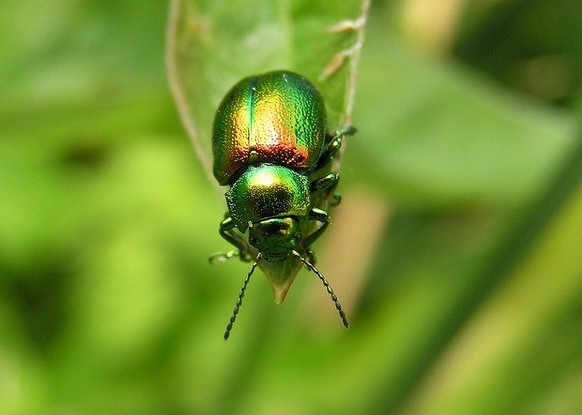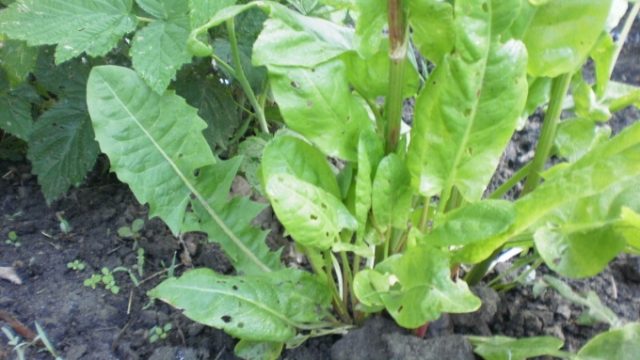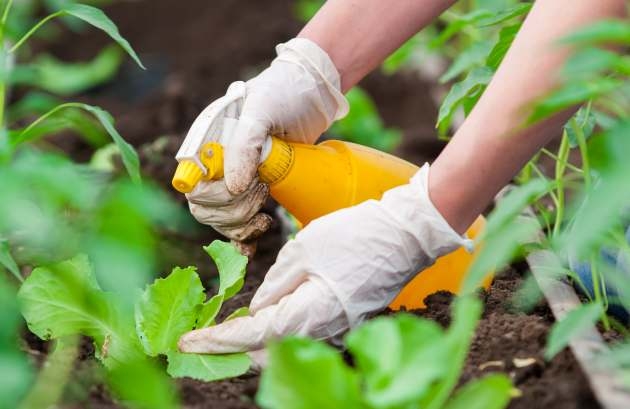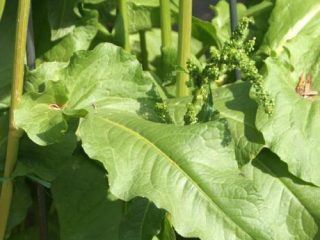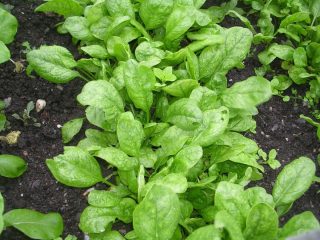Content
Sorrel can increasingly be found in gardens as a cultivated plant. The beneficial properties and taste with a characteristic sourness provide the plant with a lot of fans. Like other crops, sorrel is susceptible to diseases and various pests that must be combated in order to reap a rich harvest. Bugs often eat huge holes in sorrel, so gardeners try all effective means to combat the green pest.
Why is sorrel in holes?
When holes appear on sorrel, experienced gardeners immediately make a diagnosis - sorrel leaf beetle. This is a fast and dangerous pest. If the plant is not treated in time, the crop may die completely. Adults eat through the holes, and larvae, hatched from eggs, feast on the pulp between the veins.
Externally, the pest looks like a bug 3–4 mm long. Color - emerald with a blue, metallic tint. Females have a large abdomen and move much slower than males. The wings are fully developed. Pests begin to feed immediately after wintering, as soon as the first leaves appear. By the end of spring, green beetles mate and lay eggs. A week passes after the eggs are laid, and the first larvae of the pest appear. Then the pupation process occurs, which takes place in the soil. From there an adult emerges - a new pest.
They mate again with females and die after a short period of time. The females manage to lay eggs again, which can be found on the underside of the leaf.
Experts say that if young bugs are found, it is almost impossible to save the sorrel harvest, since the number of pests is too large.
What to do if sorrel leaves are in a hole
First of all, if you find holes on the leaves, you need to remove all weeds. The sorrel leaf beetle can reproduce very well on them. Be sure to feed it with slurry after watering the cultivated plant.
Some gardeners cover sorrel plantings in the spring. This way you can not only get rid of the leaf beetle, but also please your household with early greenery.
If a pest is detected, especially if there is a lot of it, the most damaged specimens should be removed.
Some gardeners prefer hand picking as a control method. To do this, you will need a concentrated saline solution, where you can collect bugs and eggs from the sorrel by hand. In any case, treatment with chemical insecticides is not recommended, since the sorrel will become unsuitable for food.
How to get rid of bugs on sorrel
There are many methods of fighting. They are not inferior to each other in terms of efficiency, but each gardener, depending on the degree of sorrel damage, chooses the most suitable one:
- Treat with a drug called “Maxim”. This is a chemical insecticide, so all treated leaves must be cut off. Eating such greens is prohibited. But the harvest will be saved, since new leaves grow quickly on sorrel. This will be healthy, full-fledged greenery.
- Mix 200 g of pyrethrum powder with a bucket of hot water.Leave for 12 hours and rub with laundry soap. Then spray all affected plants with the resulting solution.
- Pollinate (without using water) the leaves of sorrel with a mixture of wood ash and tobacco dust in a 1:1 ratio. The procedure is repeated, it is better to do it in a course over 5-6 days. Then the result will be higher and last for a long time.
- You can also pollinate the plant with a mixture of a glass of ash and a large spoonful of dry mustard with hot black pepper.
- Rub a piece of laundry soap into 3 liters of water and squeeze out as much garlic as possible. After a few hours, strain the resulting solution and spray the sorrel. If you feel sorry for garlic, garlic tops or shoots of the plant will do.
The problem with control is that if chemicals are used, sprayed sorrel cannot be eaten for at least a month. But while the gardener waits for a whole month, oxalic acid accumulates in the leaves, and by the end of this period, sorrel is no longer useful, but harmful to health. Young leaves bring the greatest benefit, and therefore, even after treatment, it is better to cut off beetle-damaged sorrel and wait for a new harvest to appear. By autumn, leaves will grow that are suitable for winter harvesting. Therefore, to avoid holes in the sorrel, it is better to use preventive measures against the green beetle.
Preventive measures
The main preventive measures against the appearance of holes on the leaves in sorrel are:
- deep digging of the garden in the fall to destroy wintering insects and larvae;
- removing suspicious leaves with holes when they first appear;
- thorough inspection of the plant to identify the pest at an early stage;
- in the spring it is also worth loosening the rows;
- change the planting site every 2–3 years, and treat the previous one with chemicals or simply sprinkle it with ash;
- When changing the planting site, it is important that crops of the buckwheat family, for example, rhubarb, have not been planted there previously, otherwise there is a danger of catching the same pest in the new place.
Experienced gardeners advise planting plants around sorrel that successfully repel the pest. For the leaf beetle, such plants are marigolds, calendula, pyrethrum, garlic, and nasturtium.
Experts have also noted that planting sorrel in partial shade is the best option. This makes the leaves more tender and more palatable, and many times fewer pests are seen on the crop.
If only the first small holes appear on the leaf, it is better to immediately pick it, wash it and eat it. This is a healthy product and it would be better not to spray it with chemicals. Therefore, experts advise regularly inspecting the leaves in order to identify the first symptoms. Large-scale eradication using chemicals should begin if there are eggs and a large number of damaged leaves.
Conclusion
On sorrel, pleasantly colored bugs, which children call fireflies, may not immediately attract attention. But in fact, it is a dangerous pest that can destroy the entire harvest of a useful product in a season. Therefore, it is worth taking preventive measures, since it is difficult to fight the leaf beetle: you cannot spray with chemicals, and other means are effective until the pest gets loose. The leaves should be inspected regularly and at the first appearance of small holes, the product should be picked, washed and eaten, and the plant should be sprayed with one of the folk remedies.
